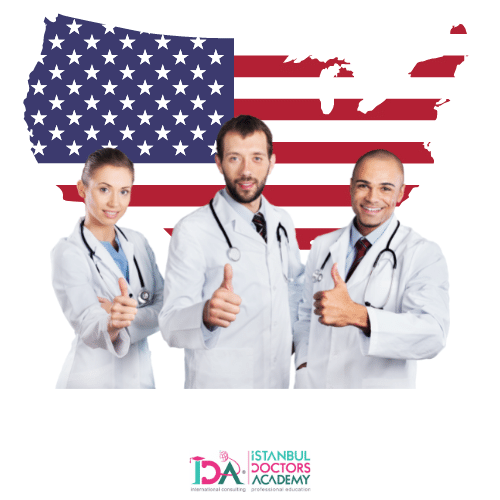USMLE Step 1 Preparation Course
Don’t miss our discounted preparation courses for the USMLE Step 1 exam.
Period
5 Month
Per Week
3 Day
Location
İstanbul
Language
English
USMLE Step 1 Exam Overview

Opportunity to Become a Doctor in America
The Step 1 exam assesses whether you can understand important concepts of the basic sciences for the practice of medicine, with special emphasis on the principles and mechanisms underlying health, illness, and forms of therapy. Step 1 provides a mastery of not only the sciences that provide a foundation for safe and competent practice of medicine today, but also the scientific principles necessary for the maintenance of competence through lifelong learning. Step 1 is built around an integrated content outline that organizes basic science materials into two dimensions: system and process.
Step 1 is a one-day quiz. It is divided into 7 blocks of 60 minutes and administered in an 8 hour test session. The number of questions per block in a given exam form may vary, but cannot exceed 40. The total number of questions in the general exam form cannot exceed 280.
To Benefit From Our Discounted Preparation Courses
USMLE Step 1 Content Description
Step 1 consists of multiple choice questions (MCQs) created by USMLE committees made up of renowned faculty, researchers, and clinicians in their fields. Committee members are selected from the academic, practice, and licensing communities in the United States and Canada.
Step 1 is designed to measure basic science knowledge. Some questions test the test taker’s knowledge on their own. However, many of the questions require the examiner to interpret graphic and tabular materials, identify microscopic pathological and normal samples, and solve problems by applying basic science principles.
The content description is not intended as a curriculum development or study guide. Questions are created in a flexible structure, taking into account new topics, emerging new content areas, and changes in emphasis. Categories and content coverage may vary.
It is aimed to create a strong general understanding of concepts and principles in the basic sciences.

USMLE Step 1 Exam Detailed Information
Outline of Step 1 Questions
The test questions of all USMLE exams are classified in one of 18 main areas depending on their focus on concepts and principles that are important in organ systems or individual organ systems.
Step 1 content weighting for these topics is stated below. The chapters focusing on individual organ systems are subdivided into normal and abnormal processes, including pharmacotherapy mechanisms. In most cases, knowledge of normal processes is evaluated in the context of a disease process or specific pathology.
While not all topics listed in the content master classes are included in every USMLE Step exam, overall content coverage may be encountered across exam forms by different test takers for each step.
| Description | % |
| General Principles | 12-16 |
| Blood & Lymphoreticular/Immune Systems | 7-11 |
| Behavioral Health & Nervous Systems/Special Senses | 9-13 |
| Musculoskeletal, Skin & Subcutaneous Tissue | 6-10 |
| Cardiovascular System | 5-9 |
| Respiratory & Renal/Urinary Systems | 9-13 |
| Gastrointestinal System | 5-9 |
| Reproductive & Endocrine Systems | 9-13 |
| Multisystem Processes & Disorders | 6-10 |
| Biostatistics & Epidemiology/Population Health | 4-6 |
| Social Sciences: Communication and Interpersonal Skills | 6-9 |
| Competency | % |
| Medical Knowledge: Applying Foundational Science Concepts | 60-70 |
| Patient Care: Diagnosis | 20-25 |
| History/Physical Examination | |
| Diagnosis | |
| Communication and Interpersonal Skills | 6-9 |
| Practice–based Learning & Improvement | 4-6 |
| Discipline | % |
| Pathology | 44-52 |
| Physiology | 25-35 |
| Pharmacology | 15-22 |
| Biochemistry & Nutrition | 14-24 |
| Microbiology | 10-15 |
| Immunology | 6-11 |
| Gross Anatomy & Embryology | 11-15 |
| Histology & Cell Biology | 8-13 |
| Behavioral Sciences | 8-13 |
| Genetics | 5-9 |